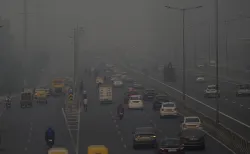Alarming rise in air pollution in Delhi-NCR, AQI drops to 328 | DETAILS
During the winter months, Delhi experiences severe pollution, driven by a combination of factors, such as low wind speeds, dropping temperatures, high moisture levels and the presence of pollution particles that act as surfaces for condensation.

A layer of smog engulfed the ITO area of Delhi as the Air Quality Index (AQI) drops to 295, categorised as 'Poor', according to the CPCB. The AQI surrounding areas of Delhi also dropped to 328, and touched 'Very Poor.' As cold weather settles in, pollution in all its forms is tightening its grip on Delhi, with the air quality in the city remaining in the "poor" category, though stubble burning has declined this year compared to previous years. Stations including Anand Vihar, Bawana, Dwarka, Jahangirpuri, Mundka, Narela, Patparganj, Rohini, Shadipur, Sonia Vihar and Wazirpur continue to be in red zone.
According to a recent study by Professor S N Tripathi from IIT-Kanpur, Delhi's air quality has declined in the last week, with the AQI consistently falling into the "poor" category. This deterioration follows a brief period of relatively better air quality over the past three weeks. Experts are attributing the spike in pollution levels to seasonal changes and increased stubble burning. The study shows that the fire count — an indicator of stubble burning — has been steadily decreasing over the last five years in states such as Punjab, Haryana, Uttar Pradesh and Delhi.
As winter approaches, Delhiites are beginning to feel a slight chill in the morning and evening hours, with the maximum temperature on Sunday recorded at 35.8 degrees Celsius, 3.2 notches above normal, according to the weather department.
An AQI between zero and 50 is considered "good", 51 and 100 "satisfactory", 101 and 200 "moderate", 201 and 300 "poor", 301 and 400 "very poor", and 401 and 500 "severe".